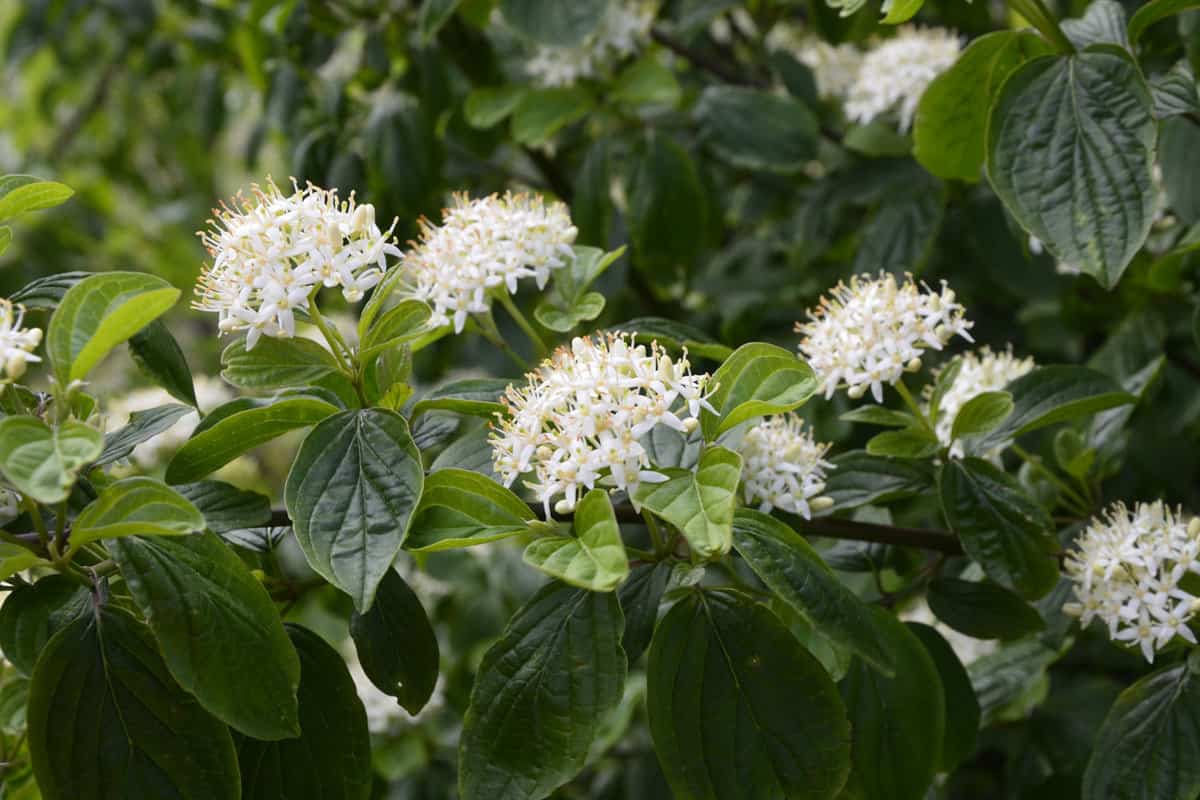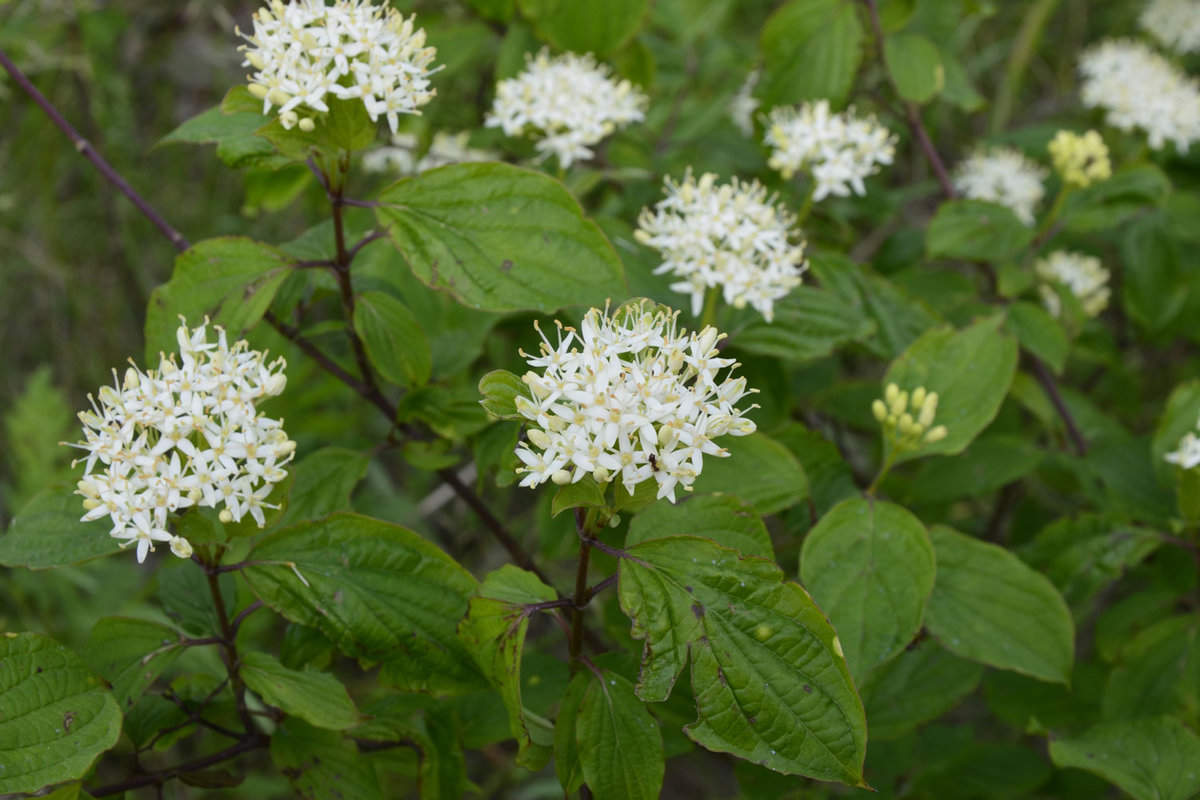Knowing how each plant will fit into your outdoor space is essential when planning a garden.
Among the varied plants you could choose for your landscape, the Ninebark shrub stands out for its vibrant foliage and ease of care.

Yet, understanding its root system is key to ensuring it gets along well with other plants and the nearby structures.
In this article, we’ll explore the root behavior of Ninebark, discussing if its roots grow deep or spread out widely and if they can become invasive.
Let's start!
Is Ninebark Deep Rooted?
The answer is no. Ninebark has a shallow lateral root system that makes it easy to transplant.
Its adaptability allows it to thrive in various conditions, including drought or flooded conditions, acidic or alkaline soils, and full sun to partial shade.

While Ninebark has shallow roots, it is essential to note that it does require ample space to grow. This is because it has an arching branch pattern that can be fully appreciated with regular pruning.
Ninebark may become overcrowded without sufficient space, leading to stunted growth and a less attractive appearance.
It is also worth noting that Ninebark can be susceptible to powdery mildew, which can be serious and disfiguring.
For this reason, it's advisable to regularly perform renewal pruning on Ninebark to promote healthy growth and prevent the spread of disease.
Does Ninebark Have Invasive Roots?
As explained, Ninebark has a fairly shallow root system, which means its roots spread out near the surface of the soil rather than going deep into the ground.
This characteristic makes it less likely to interfere with underground structures or other plants' roots nearby.
There aren't any known invasive tendencies associated with Ninebark, making it a manageable and friendly choice for garden landscapes, especially when regular care and maintenance are provided
Does Ninebark Spread or Multiply?
Ninebark has a moderate tendency to spread by producing new shoots from its roots, which can lead to the development of a larger clump or thicket over time if left unchecked.
However, unlike some invasive species that can spread aggressively and uncontrollably, Ninebark's growth can be predicted and managed.
This predictability allows you to plan and take the necessary actions to ensure that the shrub remains within the desired boundaries, thus preventing any unwanted proliferation in your garden.
You can keep the spread of Ninebark in check through regular pruning to maintain its shape and size according to your preference.
How Do You Keep Ninebark From Spreading?
If you're worried about your Ninebark shrub spreading too much, you can take a few simple steps to keep it under control.
Space Considerations
Firstly, make sure you plant your Ninebark in an area with plenty of space. These shrubs can grow quite large, so you want to give them plenty of room to spread out.
Additionally, plant them at least three feet away from your house to prevent damage to your foundation.
Pruning Practices
Regular pruning is also vital to keeping your Ninebark from spreading. Prune it in the late winter or early spring before new growth appears.
This will help maintain its shape and prevent it from getting too big. Remove any dead or diseased branches as well.
🪴 For more tips on caring for your Ninebark during colder months, check out our full guide on Winter Care for Ninebark.
Root Barrier Installation
Finally, consider using a root barrier to keep your Ninebark from spreading too far.
These barriers are made from various materials, including plastic and metal, and can be installed around the perimeter of your shrub.
They will prevent the roots from spreading beyond a certain point, keeping your shrub contained.
Want your own sturdy root barrier? Click the link below!
See this root barrier on Amazon.
Where is the Best Place to Plant a Ninebark?
The best place to plant a Ninebark shrub is in a sunny, well-drained location with enough space to accommodate its size.
They can tolerate a range of soil types, including clay, loam, and sandy soils. However, they do not do well in wet or poorly drained soils.
When planting a Ninebark shrub, choose a location that provides ample space for the plant to grow. These shrubs can reach up to 10 feet in height and spread up to 4 to 6 feet in width.
They are often used as specimen plants or as part of a hedge, so consider the desired effect when choosing a location.
In terms of hardiness zones, Ninebark shrubs can be grown in USDA zones 3-9. However, some cultivars may be more suited to certain zones than others.
Be sure to check the specific requirements of the cultivar you choose before planting.
Can You Plant Ninebark Close to a House?
Yes, you can plant Ninebark close to a house, but placing them at least three feet away from your home is recommended to allow for their growth and spread as they mature.
Ninebark shrubs have a mature spread of 4 to 6 feet wide, and spacing them properly will help avoid any potential issues with accessibility or maintenance around your home.
🪴 Should you encounter any issues with your Ninebark, you might want to read Why Is My Ninebark Dying? What To Do to resolve common problems.
How Much Space Does Ninebark Need?
When planting Ninebark, providing at least 2 to 3 feet of space between each plant is advisable.
This spacing allows each shrub to grow fully and ensures good air and light circulation, crucial for preventing disease and promoting healthy growth.
If you plan to use Ninebark as a border plant or in mass plantings, providing more space of around 6 to 7 feet from center to center could be beneficial to prevent crowding.
Proper spacing will also prevent the shrubs from growing into each other or other structures or plants nearby, ensuring that each Ninebark shrub has room to grow and thrive.
How Can You Get Rid Of Ninebarks?
If you've decided to get rid of your Ninebark shrubs, there are a few ways to go about it.
Your chosen method will depend on how established your shrubs are and how many you need to remove.
Digging Up Your Ninebarks
You can dig them by hand if you only have a few Ninebarks to remove. This method is best for smaller shrubs that haven't been in the ground for too long.
To dig up your Ninebarks, start digging a trench around the shrub, about 1-2 feet from the base.
Then, use a shovel to dig under the roots and lift the shrub from the ground. Make sure to get as much of the root system as possible.
Using Chemicals
In cases where numerous or well-established Ninebarks are present, chemical methods may be more suitable.
Effective herbicides such as glyphosate and triclopyr can be employed. It's crucial to adhere to the label instructions to ensure safe usage.
It's also good practice to wear protective gear such as gloves and eye protection and make sure the area is well-ventilated.
Lastly, be sure to keep pets and children away during the application until the area is safe again.
Hiring a Professional
If you don't feel uncomfortable removing your Ninebarks yourself or have many shrubs to remove, you may want to consider hiring a professional.
A landscaper or tree removal service will have the tools and expertise to clear your Ninebarks quickly and safely.
Final Thoughts
With the right care and attention, Ninebark can be a delightful addition to your garden, offering visual appeal and ease of maintenance.
We hope this guide has provided valuable insights for your gardening endeavors.
Did you find this article helpful? We'd love to hear your thoughts. Let us know in the comments below!

